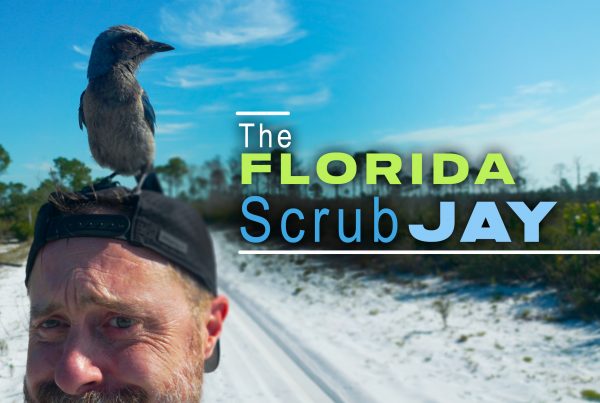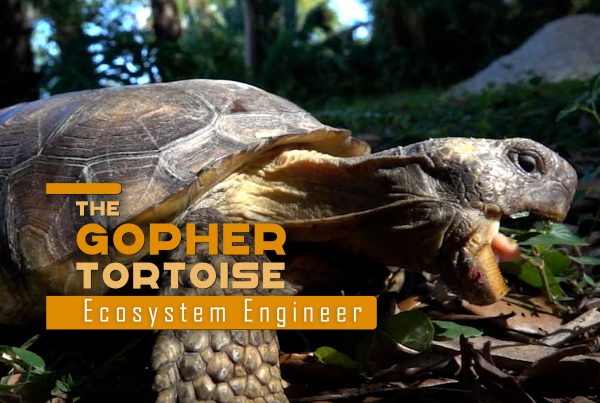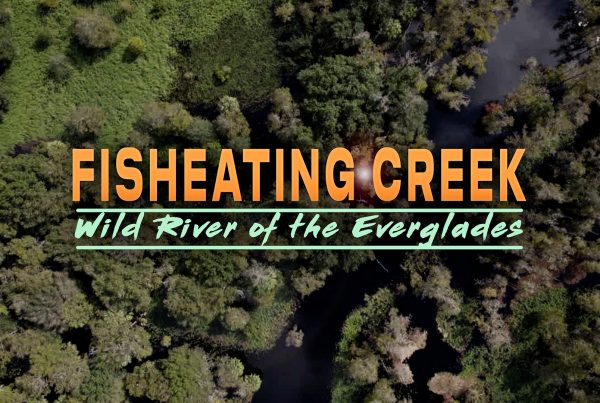Filmmakers Richard C. and Richard S. Kern explore the predatory habits of the American Alligator. Impressive footage featured includes up close and personal shots of a 10′ alligator underwater, as well as a night-feeding scene.
Vertebrate: An animal sub phylum which includes all animals with a brain enclosed in a cranium and a segmented spinal column. (Includes mammals, birds, reptiles, amphibians, fish)
Scute bone: A bony plate under the skin (alligators, armadillos, turtles)
Metabolism: The sum of all physical and chemical processes which produce, maintain or destroy an organism’s material substance (its body) and makes its energy
Apex: Summit; climax; highest point
The Alligator: Apex Predator
Here in Florida, we live with alligators. More than a million of them thrive in our lakes and rivers. Every few years a person is killed by one, reminding us to treat them with caution and respect. Years back my father was filming fish in Silver Spring when he had an unexpected encounter with a big gator. I’ll let him tell the story.
“I turned around and there it was drifting toward me – propelled by the swirling water. It looked like a huge, inflatable toy. But this was no plaything. When I could see that the alligator wasn’t going to attack, I followed it. That might not have been the best idea, but it gave me a chance to film the amazing way the reptile swam by sculling with its powerful tail.”
The alligator is a vertebrate in the class Reptilia. Other classes of vertebrates include the mammals, the birds and the amphibians. All reptiles are covered with scales that help to prevent dehydration.
In that way they differ from the fur-bearing mammals, the feather-bearing birds and the amphibians, which are covered with moist skin. All reptiles are cold blooded which means they can’t regulate their body temperature by means of their own metabolism.
Imbedded in the thick hide on the back of an alligator are scute bones that form a kind of armor plating. These bones also act like little solar panels, absorbing heat from the sun to help regulate the reptile’s temperature. Alligators look ancient, and they are. They have been around since the age of the dinosaurs, starting about 200 million years ago.
Alligators have approximately 80 cone-shaped teeth. The teeth are best suited for grabbing prey rather than cutting through flesh. When a tooth breaks off another one grows in to replace it.
In the Everglades, alligators struggle to survive as the swamp dries out each winter. In the spring, before the beginning of the rainy season, food becomes scarce. And yet, during this time, air temperatures are rising with the approach of summer. These warm temperatures keep the alligator’s metabolism high. Because of this, alligators often lose weight during March and April and may even turn to cannibalism.
The alligator is a stealthy hunter sliding silently through an Everglades pond. Males are bigger than females and can grow up to twelve feet or longer. The record was a nineteen-footer killed in Louisiana in 1890. The alligator is an apex predator at the top of the food pyramid. Other animals try to stay out of his way.
An alligator will eat almost anything. He’s not like his cousin the American crocodile which has a narrow jaw specialized for catching fish. It may surprise you that up to 40% of an alligator’s diet is snails and other invertebrates that he strains out of the mud.
But at night alligators perk up and become more predatory – more dangerous. Nocturnal animals feeding along the edge of the pond are now in greatest peril from the alligator.




